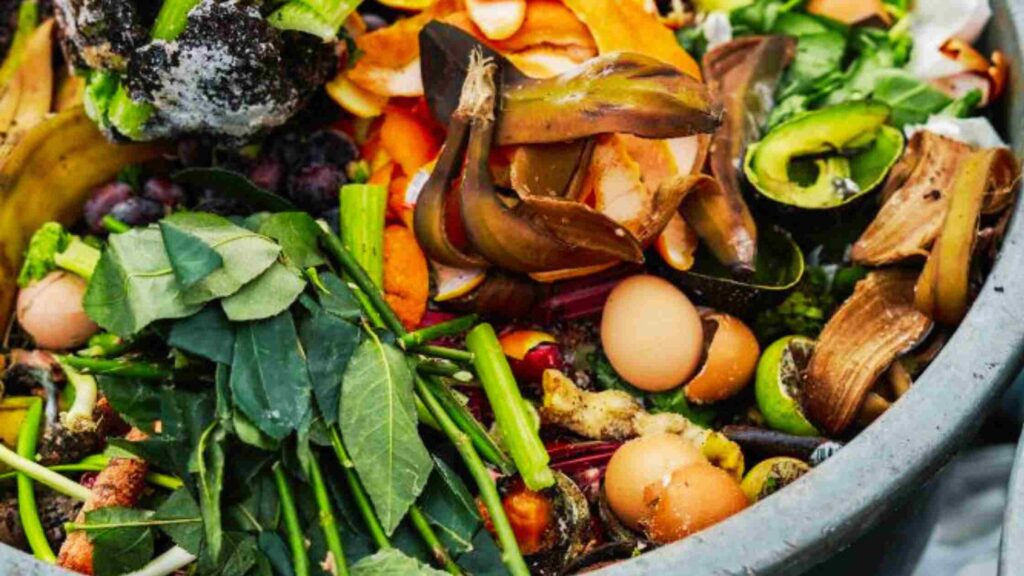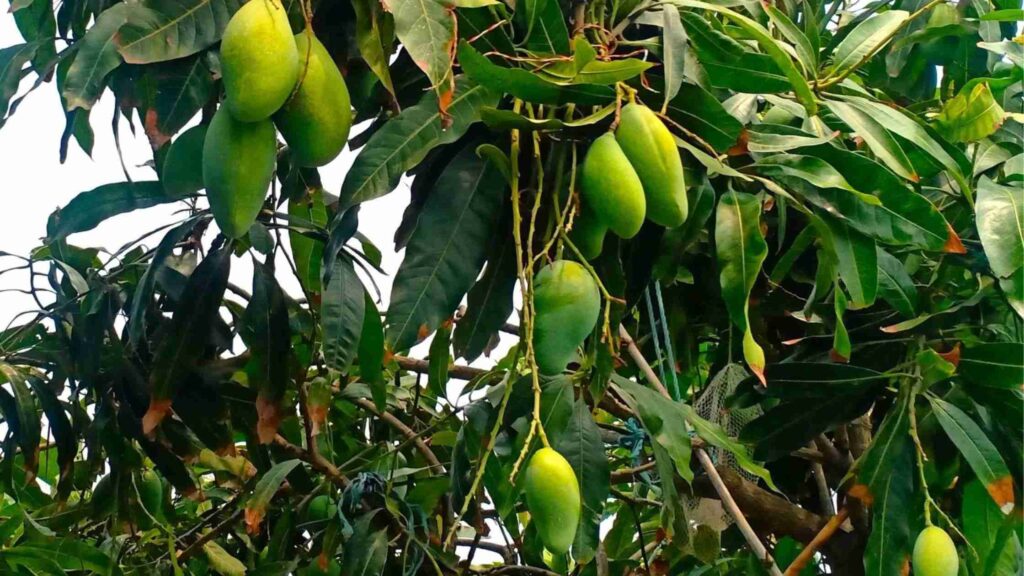There is a way to make organic compost from kitchen waste at no cost. It is in the kitchen of every home. Now I am presenting the way of making this organic fertilizer for my roof garden:
Ingredients of kitchen Compost

For preparing kitchen compost I have garden soil, peel of any vegetable, leaves, rotten vegetables, fruit peel, especially banana peel, onion garlic peel, stale flowers, garden grass, tea leaves, and raw egg peel. Raw eggshells should be well-grounded in a mixer. Many people also grind eggs by hand. It will not work. I have grid it smoothly which can mix with the soil easily. Fish scales or cooked fish meat bones should not be given. It will spread a strong stench.
The Nutrient Elements of Kitchen Compost
Kitchen compost mostly contains three elements: potassium, phosphorus, and nitrogen. In addition to NPK, it contains sulfur, carbon, calcium, magnesium, boron, copper, iron, iodine, zinc, manganese, and other elements.
Container Selection
At first, I have to take a hardy plastic bucket or drum. I have a 25-liter paint bucket. I have made several holes at the top. So that air can pass through this hole very easily. Decompose quickly when I get air. The odour will be less.
The Process of Making Kitchen Compost

The process of making kitchen compost is very easy. At first, I filled the garden soil in drums or buckets one inch thick. Put kitchen waste 3 inches thick on it. Then put 1 inch of soil on it and 3 inches of kitchen waste on it again. After filling in this way, the soil level should always be above all. I have maintained the soil layer on the above kitchen compost layer every time.
When the compost pot was full, I covered the container and kept the drum in a shady place on one side for 1 to 2 months. You have to see that if there is no leak in the lid, then rainwater or other water enters and ruins the whole process. After 15 days, once a week I opened the lid and turned everything upside down with a stick or something else.

After 1 or 2 months, the kitchen compost has been ready but still moist and wet. At this stage, it should not be applied directly to the plants. Instead, dry the compost thoroughly in the sun. Once dried, you may notice some larger pieces in the compost. These should be removed and can be used for mulching or repotting trees. Alternatively, you can return these larger pieces to the compost drum for further decomposition.
Uses of Kitchen Compost
This kitchen compost can be used for making potting mix soil or potting mix fertilizer. This kitchen compost is very handful for proper germination of seeds. It can be used by keeping it for a long time.
Odourless Process of Making Compost

Instead of plastic buckets, I took clay tubs. The earthen tub absorbs about half of the water that comes out of its decomposing waste. I mixed an equal amount of cockpit with garden soil. You can also take wood powder instead of cockpit which will absorb the rest of the liquid. You have to make sure to have holes in earthen tubs at the bottom.
At first, I filled the bottom part of the tubs with cocopeat and garden soil one inch thick. Put kitchen waste 2 inches thick on it. Then put 1 inch of cocopeat and garden soil on it and 2 inches of kitchen waste on it again. After filling in that way, the soil level should always be above all. I maintained the soil layer on the above kitchen compost layer every time. When the clay tub was full, I covered it and kept the clay tub in a shady place on one side for 1 to 2 months. You have to see that there is no leak in the lid since rainwater or other water enters and ruins the whole process.
Kitchen Compost Without Soil
You made kitchen compost without soil by using molasses, sour curd, or whey. For a 25-liter bucket of kitchen waste, you will need 100 grams of molasses, curd, and whey. After filling the bucket with kitchen waste, dissolve the molasses, curd, or whey in water and pour it over the waste. Follow the usual composting steps after this.
Alternatively, compost can be made with only kitchen waste without soil, molasses, yogurt, or whey, but this process takes 6 to 7 months. As the waste decomposes, it settles to the bottom of the drum, and a black liquid forms on top, known as “black gold” liquid. This liquid fertilizer should never be used directly. Instead, dilute 1 liter of this liquid with 10 liters of water before applying it to plants.
During the decomposition process, maggots often form in the rotting waste. There’s no need to worry about them; they originate from fly eggs and play a crucial role in breaking down the waste. As the composting process continues, these maggots will eventually turn into flies, which will then contribute to the compost.



